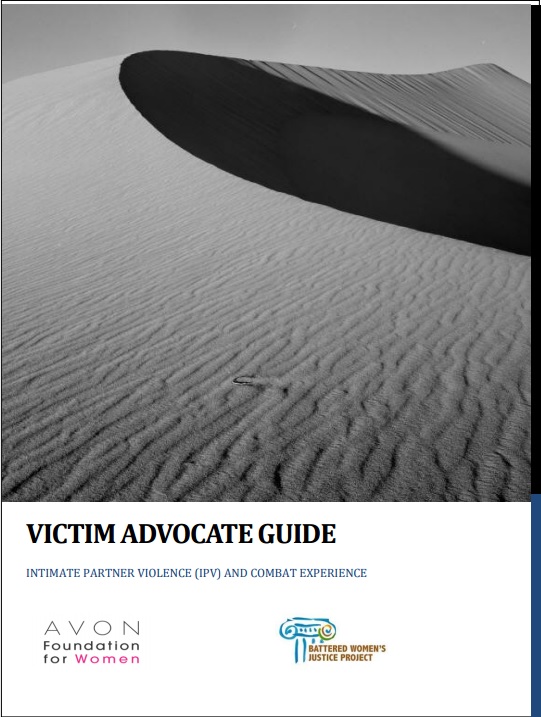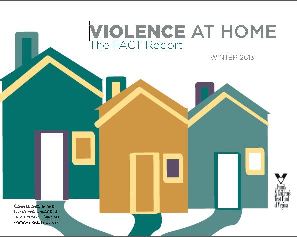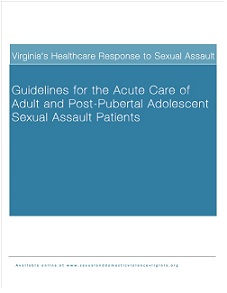Resources Library: Publications/Reports
Start a Search:
Victim Advocate Guide: Intimate Partner Violence (IPV) and Combat Experiences

Most people returning from war zones will have stress reactions and will need to readjust to being home. It’s important that advocates understand these stress reactions and their relationship to IPV in order to provide effective information and referrals to victims whose partners have been exposed to the trauma of combat and are exhibiting violent or abusive behavior.
This guide will help answer some important questions related to helping those with combat experience and their families return to and readjust for civilian life.
Click here to view this resource.
Violence At Home—The FACT Report 2013

The FACT Report presents three types of indicators to communicate factors relevant to family violence in Virginia:
- community context in which family violence develops;
- scope of family violence experienced by individuals; and
- capacity of the community to respond to family violence.
Violence at Home: The FACT Report 2014
When the first Violence at Home: The FACT Report was published in 2010, information about the extent of family violence in Virginia was scattered across state agencies, often divided by the age of the
victim or the nature of the crime. The FACT Report pulled this data into one document in an easy-to-understand format. The 2014 FACT Report is now taking this mission, to provide a comprehensive view of family violence in Virginia, a step further through the creation of a dynamic, online web portal. The portal includes 18 indicators of family violence, spanning 8 years of data for many of these measures, and presents them in an interactive report format. The information contained in this publication will highlight trends and recommendations. The full data tables that were previously located in the FACT Report and Report Appendix are now found online at: http://www.fact.virginia.gov/family-violence-indicator-locality-data-tool. To ease in the transition away from the print publication to an online data portal, this year’s FACT Report will also include report examples. Full step-by-step instructions for creating these reports can be found online at: http://www.fact.virginia.gov/step-by-step.
Virginia Violent Death Reporting System: Recent Reports
The Virginia Violent Death Reporting System has produced two recent reports on violent death in Virginia:
- Women and Suicide in Virginia, 2003-2012
- Suicide and Placement for Nursing Home or Hospice Care in Virginia (Pub. February 2014)
Virginia’s Healthcare Response to Sexual Assault:

Guidelines for the Acute Care of Adult and Post-Pubertal Adolescent Sexual Assault Patients
The document incorporates recommendations from professionals across Virginia, as well as information from current guidelines from relevant state and national resources on the management of sexual assault patients and the collection of forensic evidence. The guidelines provide a framework for the critical role of the healthcare sector in meeting the needs of sexual assault patients and the criminal justice system. They are organized around four fundamental criteria and were developed to address the healthcare response at the community, facility, and individual levels.
While these guidelines were developed specifically for healthcare professionals and facilities, the healthcare sector is just one component of a comprehensive response to sexual violence. These guidelines will also be a valuable component of statewide efforts to establish coordinated, collaborative, and compassionate responses to sexual violence in every community in Virginia. Published by Virginia Sexual and Domestic Violence Action Alliance and Virginia Chapter of the International Association of Forensic Nurses December 2009. 127 pages.
On July 1, 2013, Virginia enacted legislation that provides a procedure health care providers may use to evaluate incapacitated patients who may have been sexually assaulted (see § 54.1-2970.1 below). The legislation is intended to be used when a sexual assault examination and physical evidence recovery is prudent, but the adult patient is unable to consent and timeliness of evidence collection is crucial prior to destruction by medical interventions or bodily functions. The law outlines specific procedures and criteria that must be met in order to allow the examination and evidence recovery without the patient’s consent. In November, an addendum to the Healthcare Guidelines was released to provide guidance to healthcare professionals on the use of this new process. It is expected that the new consent process will be infrequently used, as consent for the sexual assault examination and physical evidence recovery may be obtained from next of kin, guardians, or from the patient after the patient regains the capacity to consent following temporary incapacity.

